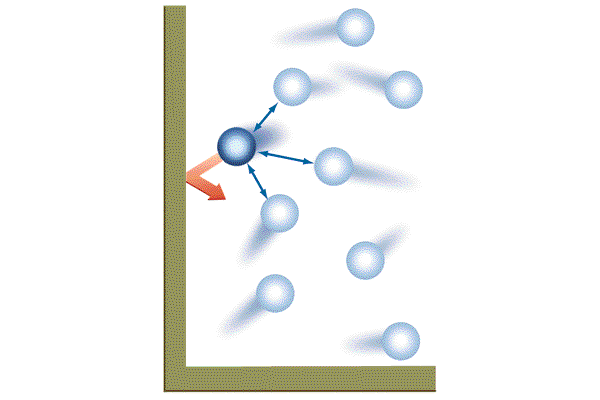Instruction
1
Gas, whatever its composition, has three main parameters: mass, volume and density. Most tasks operate on the so-called ideal gas, so they must rely only on those given in the values of mass, pressure, temperature. For example, in the problem statement can be specified nitrogen gas N2 with a temperature of 60 degrees, a pressure of 30 kPa and a mass of 0.05 g. Knowing these three parameters and the composition of the gas, by the equation Mendeleev-Clapeyron possible to find its volume. It is necessary to adapt the equation as follows:
pV=mRT/M.
By further transformation formulas, find the volume of nitrogen:
V =mRT/pM.
In this case the molar mass M can be found in the table of D. I. Mendeleev. The nitrogen in it is equal to 12 g/mol. Then:
V=0,05*12*8,31*333/30*12≈4,61.
pV=mRT/M.
By further transformation formulas, find the volume of nitrogen:
V =mRT/pM.
In this case the molar mass M can be found in the table of D. I. Mendeleev. The nitrogen in it is equal to 12 g/mol. Then:
V=0,05*12*8,31*333/30*12≈4,61.
2
If a known volume under normal conditions, and the amount under other conditions is required, apply the laws of Boyle and Gay-Lussac:
pV/T=pнVн/T.
In this case, the transform formula is as follows:
pV*T=pнVн*T.
Hence the volume V is equal to:
V=pнVн*T/p*T.
The index n means the value of a parameter under normal conditions.
pV/T=pнVн/T.
In this case, the transform formula is as follows:
pV*T=pнVн*T.
Hence the volume V is equal to:
V=pнVн*T/p*T.
The index n means the value of a parameter under normal conditions.
3
If we consider the volume of gas from the point of view of thermodynamics, it is possible to notice that gases can act forces by which changing the volume. The gas pressure constantly, which is typical for Isobaric processes. In such a process the volume changes from one value to another. They may be designated as V1 and V2. In terms of the number of tasks describes some gas under the piston in the vessel. During the expansion of the gas piston moves a distance dl, with the result that the work is carried out:
A=pdV=p(V2 -V1).
This formula relates the change of the gas volume and work. As you know, if given final volume V2, it is possible to find the initial volume V1:
V1=pV2-A/p.
A=pdV=p(V2 -V1).
This formula relates the change of the gas volume and work. As you know, if given final volume V2, it is possible to find the initial volume V1:
V1=pV2-A/p.
4
Finally, the easiest way to find the volume of gas on the basis of two different physical parameters - mass and density. If the conditions specified gas with a certain density and mass, its volume should be calculated according to the formula:
V=m/ρ.
Each gas has a specific density, as well as any solid or liquid substance. Therefore, finding the volume of gas in the first place it is necessary to consider this option.
V=m/ρ.
Each gas has a specific density, as well as any solid or liquid substance. Therefore, finding the volume of gas in the first place it is necessary to consider this option.
